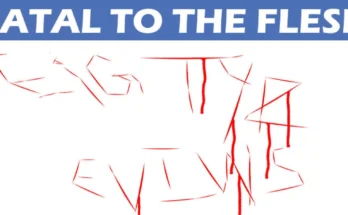Do you remember Hannibal? The riveting story of a cannibalistic serial killer – who managed to evade the FBI by staying within their ranks – only aired for three seasons. While most people attribute its cancellation to poor ratings, the film’s producer, Martha De Laurentiis, heavily blames online piracy.
Hannibal is just a tip of the ice berg with regard to the number of films affected by this vice. With most content producers and owners looking to maximize revenue from their work, piracy is a formidable threat. Worst of all, it also poses a threat to any consumer looking for alternative ways to access content illegally.
Although it is nearly impossible to completely eradicate online piracy, there are ways to prevent it. No one way will suffice in this fight, but a combination of multiple strategies. Here are the effects film piracy has on the film industry and how to mitigate it:
Why Film Piracy Has Been on the Rise in the Last Decade
There were many barriers to piracy in the past, mostly due to poor technological advancements. The content was tough to find online and would mostly be found on malware-infected sites. Once downloaded, the quality could also be subpar. Lastly, people needed to look for ways to convert the content to be watched as TV shows.
Today, accessing pirated content is easy, with consumers having a diversity of sites to choose from. Thanks to high-speed internet connectivity, ownership of multiple devices, and easy access to storage, interacting with this content is even easier.
The pandemic has also impacted the film industry in a bevy of ways. With people having more time than they know what to do with, most have resulted in consuming pirated content. The fact that it’s cheaper to access this content makes it an ideal alternative to using legal channels.
The Impacts of Film Piracy
Film piracy affects the entire legitimate content distribution network. This includes content producers, distributors, and even consumers. Some of their effects include:
- Revenue loss – consumers who shift to alternative illegitimate content sources could have easily bought the content. This leads to losses for all parties involved. In fact, piracy is estimated to lead to as much as $71 billion in losses for the US film and TV industry.
- Reduced production funding – investors are always looking to invest in profitable ventures. When a film results in losses for them, most tend to stay away from further investment in it. This has been a leading contributor to the cancellation of major films.
- Increased security risks – one in every three piracy websites has malware. This shows that most consumers are exposing their sensitive data to threat actors. Considering the amount of personal data people store on their mobile devices – from credit card accounts to home addresses – there is no telling what a threat actor might do with it.
- Reputation damage – considering the diminished quality most pirated content is shared in, it could impact the reputation of the producers. Consumers might perceive the producers of the content with such sub-par quality, making it tougher to make legitimate sales in the future.
Start by Eliminating the Incentive to Watch Pirated Films
Most casual consumers of pirated content might feel like consuming this content is the best option. For instance, with most streaming sites offering content at high price points, consumers will look for alternative means to gain access to content. The best option for this problem is to lower the price for streaming sites while maintaining profit margins.
Aside from price, content distributors should also look for ways to improve the consumption experience. Bells and whistles like personalization could easily improve the experience, especially through customized content suggestions.
Educate Consumers on Digital Piracy
Consumer ignorance is a huge driver of piracy. While pirated content might be obvious to people in the industry, consumers might struggle to know the difference between legitimate and illegitimate content. For instance, it is becoming tougher for consumers to tell apart illegal sites from legal ones.
With more streaming service providers launching new sites, it makes sense why there is confusion in this area. Some of the illegitimate sites also ask for a premium to access content, which further baffles consumers. Consumers need to be educated on identifying these sites and the cybersecurity risk they pose to them.
Use Legal Enforcement to Fight Piracy
There is a bevy of legal ways to combat film piracy. For instance, producers can interrupt and remove pirated content through simple take-down notices or even involving law enforcement agencies in the most extreme of cases. Sending consumers real-time messages could also help curb this menace. With the help of the right anti-piracy service providers, it can be easy to spot consumers interacting with illegitimate content and urge them to switch to legitimate options.
Speed is everything when battling this menace. While prosecution could take some time to be effective, removing content from the culprit website immediately helps curb the issue. It also forces consumers to switch to other legitimate means of consumption.
Use Technology to Fight Piracy
If you can identify the people who are pirating your films, fighting them becomes easy. With advancements in technology, spotting these culprits in the act becomes much easier. Technologies like watermarking and fingerprinting your films will make it easy to identify pirates.
Once operators identify a culprit, legal measures can be taken. For instance, issuing a take-down notice could help, not to mention, involving law enforcement officers. Operators could also collaborate with ISPs to block film-pirating websites.
Introduce Barriers to Entry for Pirates
In the same way operators need to incentivize consumers to consume legitimate content, they should make it tough for pirates to access the content. Gone are the days when content creators could release unprotected content. With most looking to protect their Intellectual Property and investments, the best option could be only striking licensing deals with operators that can prove commitment to this protection.
In practice, this means that content producers should only partner with operators that use effective Digital Right Management Systems. This can be anything, from IP and OTT delivery to card-based Conditional Access Systems. Since there is no silver bullet for the menace, the best option would be leveraging multiple anti-piracy measures.
Cooperation between all Parties to Fight Piracy
Most parties in the film industry are in competition, from content creators to distributors. However, the potential losses from piracy are large enough to warrant these parties to set their differences aside. The fight against piracy is only as strong as the weakest link in the industry. For instance, deregulated processes lead to non-standardization, making it easy for culprits to access the content.
On the flip side, having all parties work together could help keep pirates at bay. The industry at large could come up with measures that improve safeguards against piracy.
All Hands on Deck
It’s evident that film piracy can have a huge impact on all parties, from the content producers to the consumer. Fighting this menace will serve the interest of all parties involved. While most operators and producers are in constant competition, the fight against film pirates is one area where unity is vital. The more concerted their efforts are, the easier it will be to mitigate the risks that come with film piracy.




